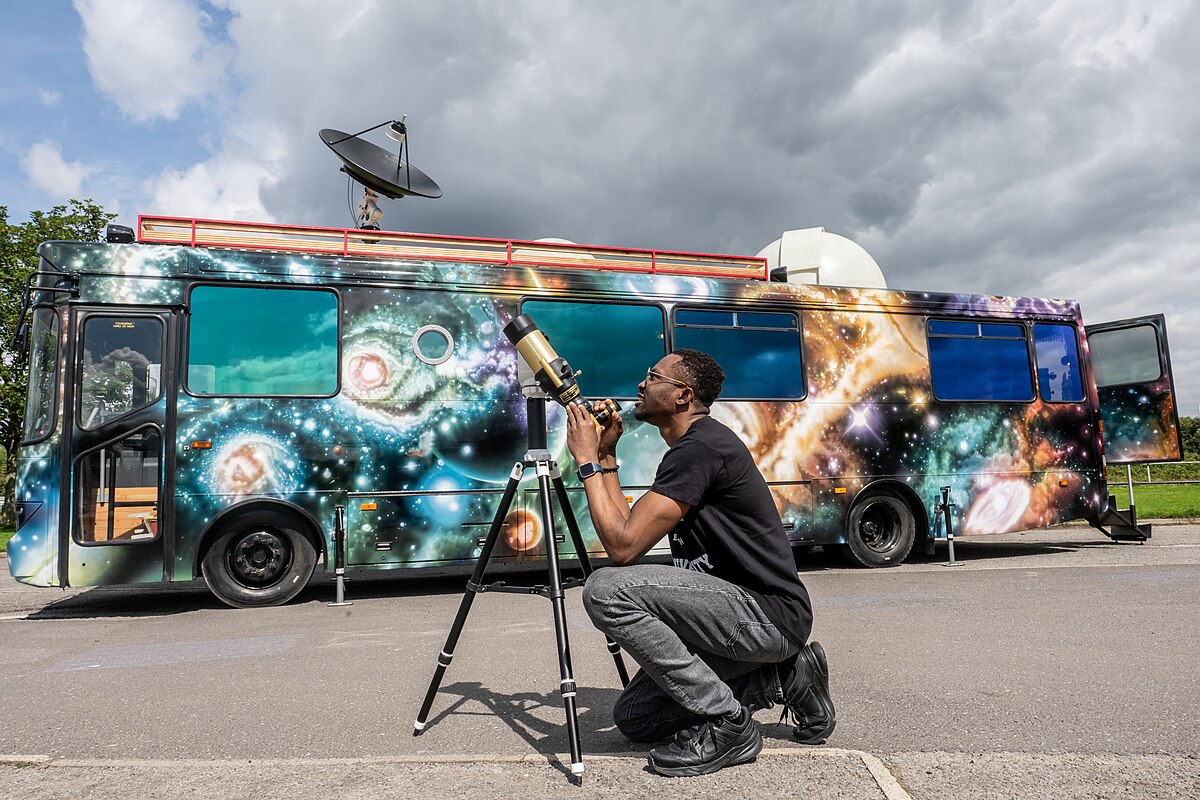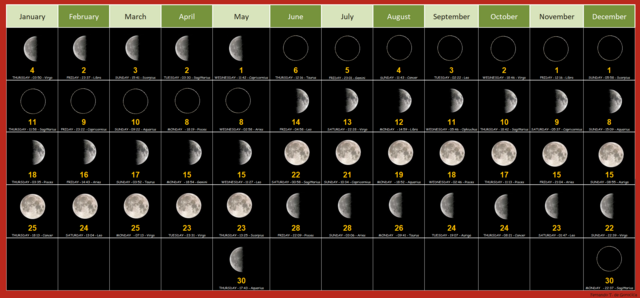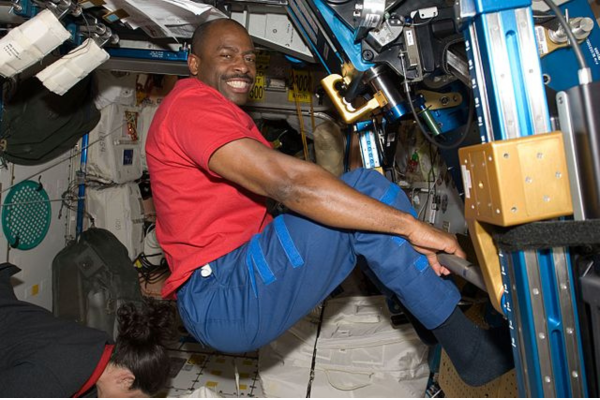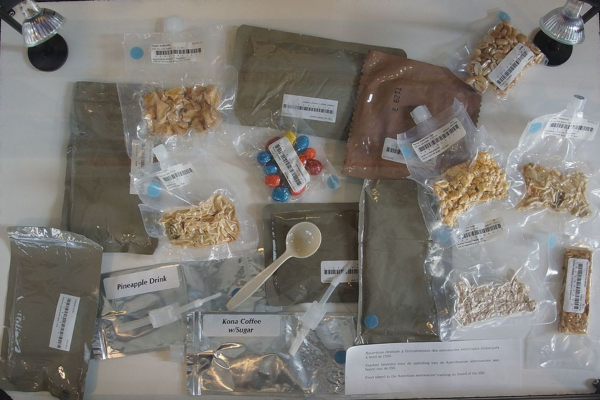Learning Guide
Episode: The Moon
Grade Levels
4-7
Subjects
Language Arts, Science, Math, Social Studies, Art, SEL, Media Literacy
Grade Levels
4-7
Subjects
Language Arts, Science, Math, Social Studies, Art, SEL, Media Literacy
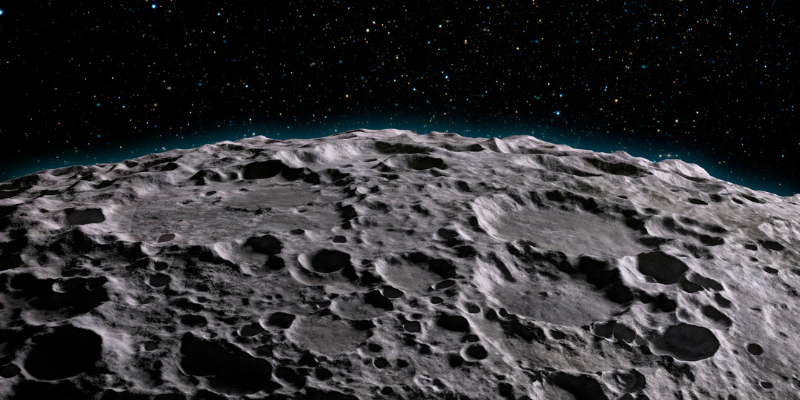
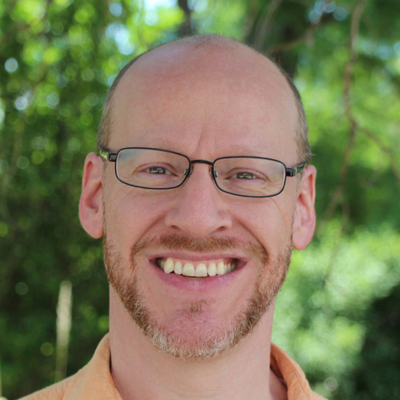
Phil Plait, or “the bad astronomer,” writes and teaches about space.
We hope you enjoyed listening to our show that featured some amazing people who study the Moon including astronomer Dr. Phil Plait, astronaut Commander Reid Wiseman, and planetary geologist Dr. Chip Shearer. We also brought back a segment from a beloved friend and physicist, the late Crawford MacCallum.
We can learn so much about the Moon thanks to scientific research, and our natural satellite can inspire us to do good to each other and the Earth. Complete the activities below to learn more about our Moon.
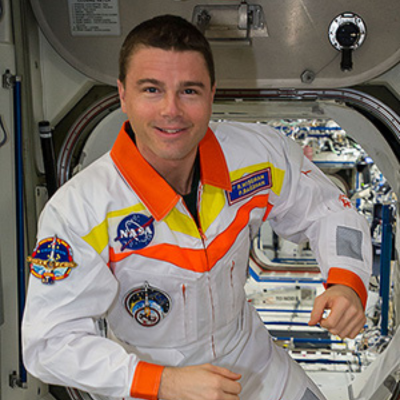
Commander Reid Wiseman is a NASA astronaut who will lead the Artemis II mission to the Moon.
Astronomer
Someone who studies things outside of the earth such as the Sun, Moon, planets, distant galaxies, and other objects in space. They use special equipment such as telescopes.
Astronaut
A person who is specially trained and prepared to travel into outer space. They conduct experiments, manage systems, install equiptment, and complete other important research.
Vocabulary
Vocabulary words can be found throughout the page in bold.
Global Community
All humans who live on earth are part of a global community. Being part of this community means having a responsibility to protect the planet that we all share and live on. As members of a global community, people should work together in the best interest of all humankind.
Trans-lunar Injection
A maneuver used to send a spacecraft to the Moon. When a spacecraft is within the Earth’s orbit, at an exactly timed moment, it conducts a Trans-Lunar Injection to push itself away from the Earth and towards the Moon.
Gravity
A physical force of attraction that effects all matter in the universe. The force of gravity is what keeps planets and objects in space in orbit.
Studying the Earth’s Moon
Humans have been curious about the Earth and what’s outside of it for as long as we’ve existed. Thousands of years ago, our human ancestors from all around the world used the Moon for many purposes such as measuring time or understanding changes in climate and environment, and many cultures found different ways to study, understand, and appreciate our Moon. Today, thanks to advancements in math, physics, and astronomy (the study of things outside of the Earth such as the Sun, Moon, planets, and distant galaxies), we have a growing understanding of space and everything in it.
Dr. Plait explains that, for a long time, the Moon was a mystery and there were many theories for its origins. Once scientists brought back lunar samples, they were able to determine that it was probably formed due to a gigantic impact, where debris floating in space combined and formed the Moon.
The Moon also helps us to understand more about ourselves by revealing information about the history of the Earth. As we learn from Dr. Shearer, the Moon acts as a record of what happened to the Earth four billion years ago. The composition, or make up, of matter collected from space such as space rocks can teach us about the evolution of life on Earth. Using scientific methods, we can determine the age of Moon rocks and compare them to rocks found on earth to learn about eras of time and what life was once like. Understanding the history of our planet and its relationship to the Moon helps us to possibly understand the Earth and plan for our future.
Activity: Moon Model
Practice your scientific and mathematical skills to understand the relationship between the Moon and the Earth with this Moon model activity. Using different materials, measure, calculate, and build a model of the Earth-Moon system.
Life in Space
On the show we learned what it is like to live in space from someone with firsthand experience. We heard from Commander Reid Wiseman, who is an astronaut, a person who is specially trained and prepared to travel into outer space. He will be returning to space and traveling to the Moon as part of NASA’s Artemis II mission.
Commander Wiseman answered kids crew questions about what it feels like to live in microgravity, what is a day like living in space, what it is like to step out of the spacecraft, and much more.
We learned that a day in the life of an astronaut is guided by routine. First they wake up, then hold a meeting to plan their day, have breakfast, and finally begin their work. There are three main tasks that they accomplish during their days: they complete maintenance to keep the spacecraft running smoothly, conduct scientific research, and take care of their bodies.
Exercise is important because, in space, it is easy for bodies to become weak. Commander Wiseman also gave us some inside info on other changes that occur to the body, such as how quickly it adapts in space and what its like to pass gas and use the restroom 😆.
Some of the research that astronauts conduct as part of a team with scientists and engineers back on Earth includes tracking their own health – such as measuring their heart rate – and performing ultrasounds to study changes to their bones and other body parts. They also do experiments related to plants and bacterial growth, to learn about the effects of gravity on objects in space, and much more.
Activity: Design a space experiment
Imagine you are an astronaut or an aerospace engineer who is designing an experiment to be performed by astronauts in space. What would your experiment be about? What objectives would you want to accomplish, what materials would be needed, and what questions could be answered from your experiment? Use this activity to complete the design.
The Moon Connects and Inspires Us
When you look into the sky or horizon and see the Moon, it’s special to know that other people around the world can see it too. Though they may be in a different time zone or on a different continent, everyone is still connected by the planet that we live on. The Moon connects us to each other, to our environment, to big questions, and to space. Scientists from around the world have historically competed for knowledge and access to space exploration and the universe, but as we learned from Commander Wiseman, international partners work together and this paves the way for future ways in which humans can continue exploring the solar system.
All humans who live on Earth are part of a global community and have a responsibility to protect the planet that we all share. Indigenous/Native American cultures believe in living in harmony with the Earth by respecting natural resources and all living things. Many of their teachings can be implemented to help protect the Earth today. Early cultures of the Americas such as the Maya, Inca, Mexica (Aztec) and other groups passed down knowledge, architecture, and artifacts that prove they had an extremely high level of understanding about the Moon. They studied its paths, cycles, and relationship to the Sun, Earth, stars, and planets.
Tribes such as the Diné of Southwestern US have a deep and high level of respect for these things. They teach their children that relationships of respect go beyond human relationships, and that they must also respect the Earth (mother), the Sun (father), and the Moon (grandfather). The Sun is a very important part of their culture; during eclipses, they believe that the Sun is undergoing a death or transformation, and a renewal, or rebirth, occurs afterwards in both our Sun and in people. They show respect to this powerful and important event by remaining indoors in a state of focus and prayer. Learn more with this video.
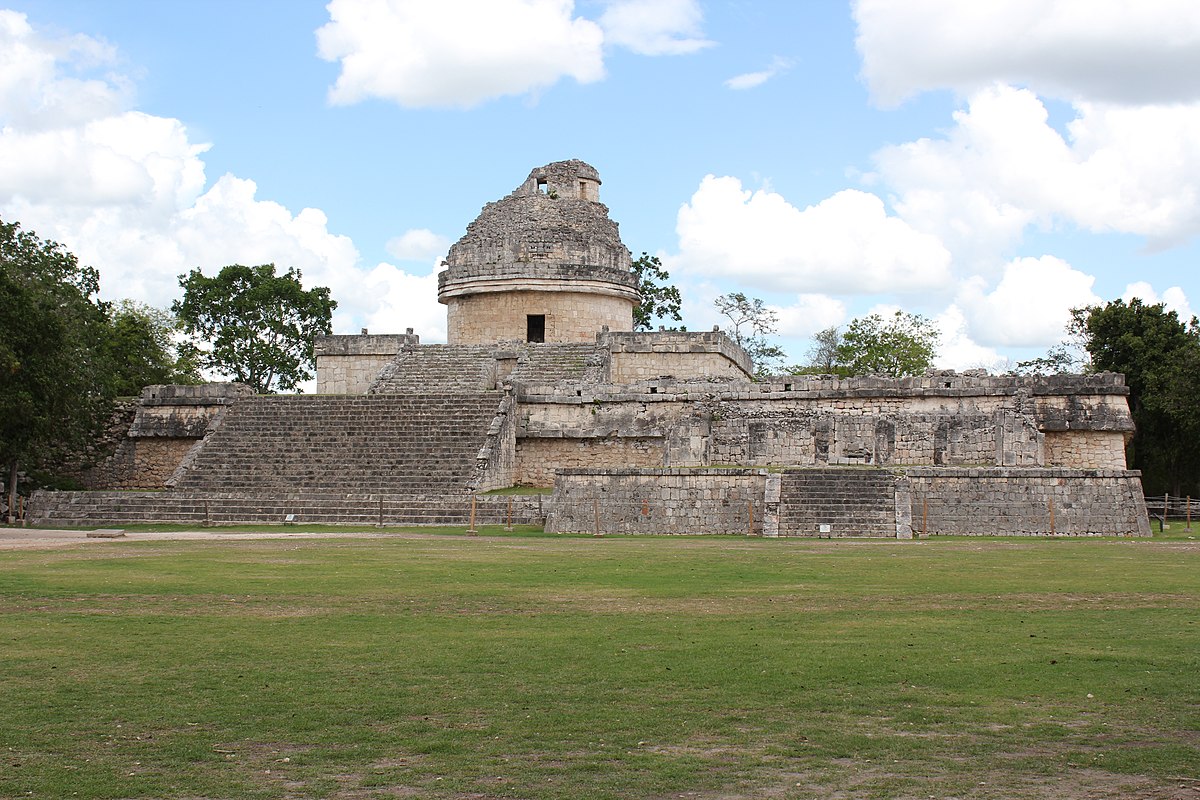
The Caracol (“snail”) observatory in Chichen Itza, where the Maya studied astronomy.
Image Source
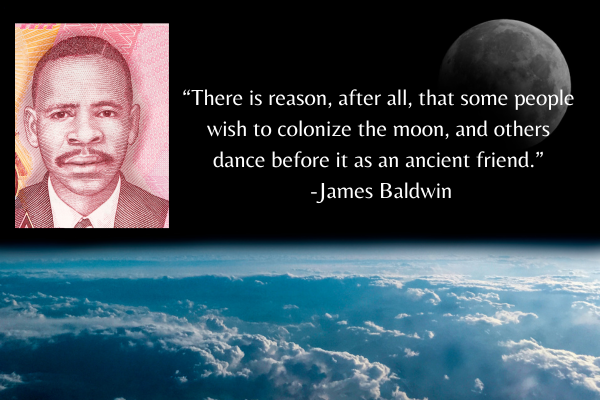
James Baldwin was an American writer, poet, and civil rights activist.
Activity: Moon Journal
The Moon has inspired all who have studied it. Now its your turn to study the Moon and learn more about yourself! Complete this Moon Journal Activity for 1 week and observe how the Moon changes. Use it as an opportunity to reflect on yourself and how you transform day to day through your thoughts, feelings, and emotions.
Planting with the Moon
On the show we got to hear about how Earth’s Moon got its various names. In 1957, the Farmers Almanac named the 12 Moons, some of which were adopted by settlers from Indigenous peoples. The names vary based on location and geography and fit into different calendar systems depending on cultural groups. Something that they all have in common is that many of the names relate to what is happening in nature, climate, and agriculture. It is believed that farming and gardening would have more success when it was planned in a way that takes the moon into account. See if you can identify names that relate to nature in this list of Native American Moons and learn more about why they named the Moon here.
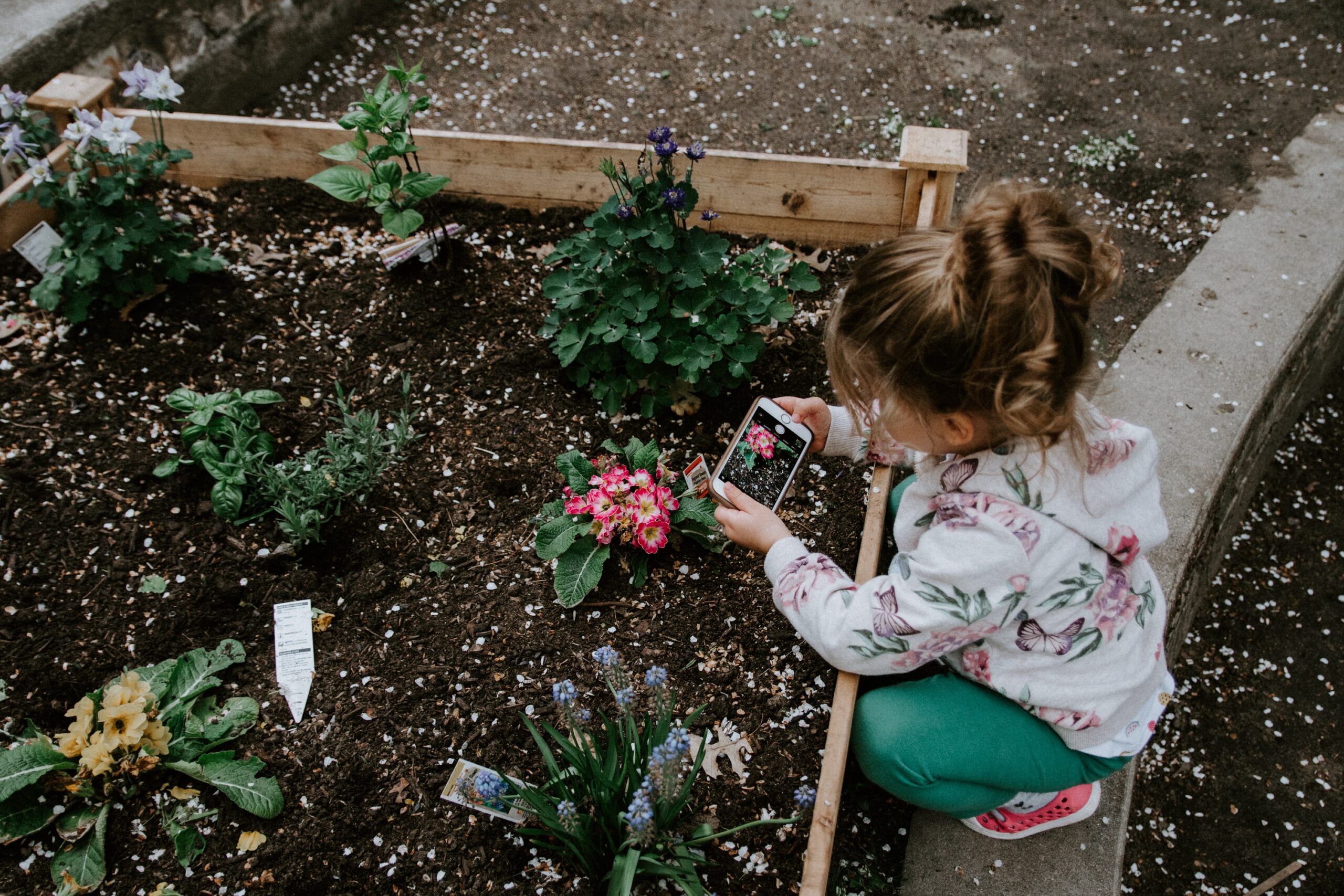
Challenge: Planting with the Moon
Humans have studied the moon to help guide their planning of agriculture and farming. Use this Farmers Almanac guide to gardening according to the Moon and type in your zip code to view a planting calendar to try your hand at gardening with the Moon. Keep a journal with sketches and diagrams of how your garden was planned and its progress throughout the growing season.
Media Journal: The Moon
Watch and Learn
After watching one or both of the videos, use the guiding questions to reflect on what you learned. Share your information with another person.
What did I already know about this topic?
What did I learn from the video?
What new questions or wonders do I have?
More Activities and Resources
Check out these space experiments for kids.
Join the Artemis mission to the Moon with activities from NASA learning resources.
Hands on activities about the Artemis mission designed for day camp experiences.
Play games and learn about NASA.
Learn about how the Maya studied astronomy from this fun website from the Smithsonian Museum of the American Indian.
PBS Learning Media videos that highlight primary sources about James Baldwin
Learn more about the Apollo 11 mission in which human first set foot on the Moon, through this interactive timeline.
Learn more about the different types of full Moons using NASA’s Space Place website for kids.
©2024 The Children’s Hour Inc., All Rights Reserved.

